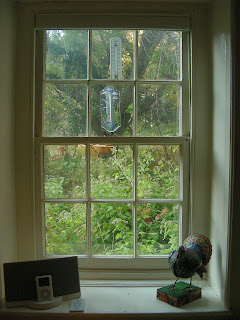"Sourlands"
What a wonderful, evocative name for a landscape. The Sourlands are a narrow band of elevated, rocky land running generally southwest-to-northeast through the west-central part of New Jersey from the Delaware River (on the west) to just north of Princeton (on the east).
The terrain is characterized by a stony ridge rising about 400 feet above the surrounding land. The ridge is there because of an igneous rock called diabase. Sixty-five million years ago, as Africa and North America began to tear away from one another along their mutual suture, the land on either side of both continents stretched and fractured. In some places, the fractures became faults, while in others, magma welled up into the fractures from below but never made it to the surface. Instead, it solidified deep underground into diabase, a rock that is much more resistant to erosion than the surrounding sedimentary layers. Over the intervening millions of years, the sedimentary shale layers entombing the diabase have worn away, leaving an exposed ridge of resistant rock. The exposed diabase weathers into huge block and boulders that tumble down the slopes from the top of the ridge.
 | ||||||||
| A refugium. The forest has no understory vegetation, undoubtedly because of the dense white-tailed deer population. These ferns escaped atop this rock. |
The origin of the name Sourlands is disputed. Some sources claim that the rocky landscape was not arable and thus useless, or "sour." Other sources claim that the name is a corruption of the word "sorrel" meaning "reddish," but I wonder about that interpretation because, while the sedimentary shales surrounding the Sourlands do weather into reddish clay soil, the Sourlands soils themselves are brown loams. Surely someone has tested the pH; the most logical explanation is that the soils are very acidic.
Somerset County (NJ) has preserved 3,197 acres at the eastern end of the ridge as the Sourland Mountain Preserve, and has built a trail network throughout. Kali and I visited on the Sunday after Thanksgiving, a beautiful late autumn day with temperatures near 50 degrees and sunny skies.
The biggest draw in the preserve is a particularly distinctive boulder field perched on the eastern shoulder of the ridge. It's a ridge-top amusement park with rock outcrops, crevices, overpasses, and underpasses. The 5-mile Ridge Trail loop, which we walked, also includes extensive boardwalks crossing poorly drained portions of the landscape and a walk along Roaring Brook, which emerges from a valley filled by a truly Brobdingnagian tumult of room-sized boulders.
 |
| Roaring Brook |
















